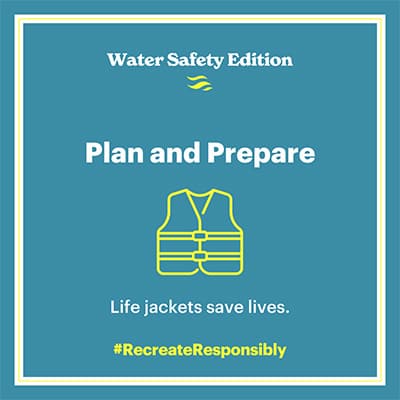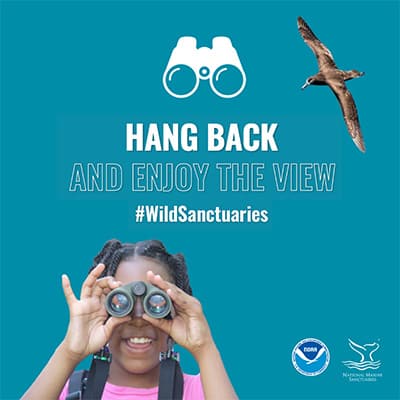Camping Itinerary:
Channel Islands Remote Oasis
By Rachel Plunkett
August 2022
Channel Islands National Marine Sanctuary and Channel Islands National Park
Channel Islands National Marine Sanctuary protects 1,470 square miles of ocean waters around Channel Islands National Park (made up of the Northern Channel Islands: Anacapa, Santa Cruz, Santa Rosa, San Miguel, and Santa Barbara islands.) The waters surrounding the islands are a refuge for endangered species, sensitive habitats, historic shipwrecks, and cultural resources that can be explored through boating, paddling, or diving, and the many trails that traverse the islands provide visitors to the national park with spectacular camping and hiking opportunities, scenic views, and wildlife watching opportunities. The island waters are protected by the National Park Service, Channel Islands National Marine Sanctuary, and the State of California.
Getting There
If traveling from outside of California, the closest airports to the Channel Islands are Los Angeles International Airport, Burbank (Bob Hope) Airport, Santa Barbara Airport, and Camarillo and Oxnard Airports.
To get to the campsites on the islands, book a reservation with the park concessionaire boats (Island Packers) or a private boat. The National Park Service has a guide on boat transportation to the islands.
Where to Camp
Primitive camping is available on any of the five islands that make up Channel Islands National Park:
- Anacapa
- Santa Cruz
- Santa Rosa
- San Miguel
- Santa Barbara
Advanced camping reservations are required for all front country and backcountry camping. Reservations can be made no more than six months in advance.

Three Day Itinerary: What to Explore
Day 1
Island Ferry
- Take a ferry to Scorpion Anchorage on Eastern Santa Cruz Island (or one of the other islands if you want to modify this itinerary). If you take the 8:00 a.m. ferry, you’ll arrive at Santa Cruz Island around 9:00 a.m. For thousands of years, Chumash people inhabited Santa Cruz Island, which was known to them as Limuw, meaning "in the sea."
Kayaking
- Take a kayak tour to explore breathtaking views of scenic coastlines and sea caves around Santa Cruz. Channel Islands Adventure Company is the authorized kayak guide and outfitter within the national park in the the Scorpion Anchorage area of Santa Cruz Island.
Lunch and Sunset Hike
- Stop for lunch at the picnic tables in Scorpion Anchorage.
- Unwind for the day by heading out for a sunset hike on one of the scenic hiking trails. If staying at Lower Scorpion Campground, some great easy to moderate trail options nearby are Historic Ranch (0.5 miles; easy), Cavern Point Loop (2 miles; moderate), and Potato Harbor (5 miles; moderate).


Day 2
Snorkeling
- Start off your morning with a snorkeling tour to explore a kelp forest with colorful marine life and impressive rock formations. More than 800 species of marine life call the Channel Islands home. Reefs are dotted with colorful sea stars, urchins, anemones, nudibranchs, and small reef fish. Divers also have a good chance of seeing sea lions or harbor seals. You can bring your personal snorkel gear; rent a mask, snorkel, and fins, from the mainland and bring it with you; or rent gear from Channel Islands Adventure Company on Santa Cruz.
Hiking
- After your underwater adventures, head back to the campsite to dry off and hit the hiking trails for more spectacular views. With more time left in the day, you can try out some of the more difficult and longer trails, such as Scorpion Canyon Loop (4.5; moderate to strenuous) for a chance to see the unique island scrub-jay, or Smugglers Cove (7.5; strenuous; no water available) to be rewarded with a large, secluded, cobblestone beach at the end of the trail.


Day 3
Ferry to Mainland
- Pack up camp and ride the ferry back to Ventura. Be sure to leave your camping spot better than how you found it.
Lunch and Visitor Center
- Take a stroll around the Channel Islands Harbor and stop for lunch, coffee, or ice cream.
- Make a stop at the Channel Islands Maritime Museum in Channel Islands Harbor or the Channel Islands National Park Visitor Center in Ventura, or visit any of the other nearby aquariums and museums that feature Channel Islands National Marine Sanctuary and Channel Islands National Park.


Extend Your Trip
If you have a few more days to enjoy your trip, there are many other points of interest on land and water within a few hour’s driving distance. You could camp out at one of the county, state, or private-run campgrounds in Ventura County and make a day trip out of it, or move your campsite north to get a few extra days in exploring other natural treasures along California’s coastline. Check recreation.gov to find out details and make camping reservations.
Other Things To Do With More Than Three Days:
- There’s so many things to do during your visit to Channel Islands National Marine Sanctuary, such as recreational fishing, wildlife watching, and even scuba diving!
- Book a whale watching tour for a chance to see the incredible wildlife that call Channel Islands National Marine Sanctuary home, such as Pacific gray whales, blue whales, humpback whales, sei whales, and California sea lions. You might even be lucky enough to have a rare sighting of a basking shark! Be sure to check out this guide on the different types of wildlife you can see throughout different seasons, and the National Marine Sanctuaries Wildlife Viewing Guidelines before your trip.
- Learn about Chumash history and culture by visiting the Santa Barbara Museum of Natural History, or participate in traditional Chumash ceremonies and events with the Wishtoyo Foundation. The northern Channel Islands and the surrounding waters have a rich human history dating back more than 13,000 years.
- Stop by Monterey Bay National Marine Sanctuary, or visit Elkhorn Slough, a great place for kayaking and viewing harbor seals, southern sea otters, and many different wetland birds.
- Travel north and camp in Portola Redwoods State Park and hike the majestic redwoods.
- You could travel even further north to explore Greater Farallones National Marine Sanctuary, Point Reyes National Seashore, and Golden Gate National Recreation Area. Campsites are available at Point Reyes National Seashore Campground through Recreation.gov.

*Note: Make sure you book your campsite on the Channel Islands a few months in advance, and have your campsite booked before you book your ferry ride to and from the islands. Campfires are not allowed on the islands. If you want to cook food at night, make sure to bring a camp stove. Potable water is available only at Scorpion Campground on Santa Cruz Island and Water Canyon on Santa Rosa Island. At all other campsites you will need to bring your own water. There are no trash cans available on the islands—pack out what you pack in. Snorkeling and kayaking activities are weather dependent. There is no transportation available on the islands. Once on the island, all areas in this itinerary must be accessed on foot or by kayak. Always check trail and weather conditions before heading out.
Rachel Plunkett is the writer/editor for NOAA's Office of National Marine Sanctuaries



